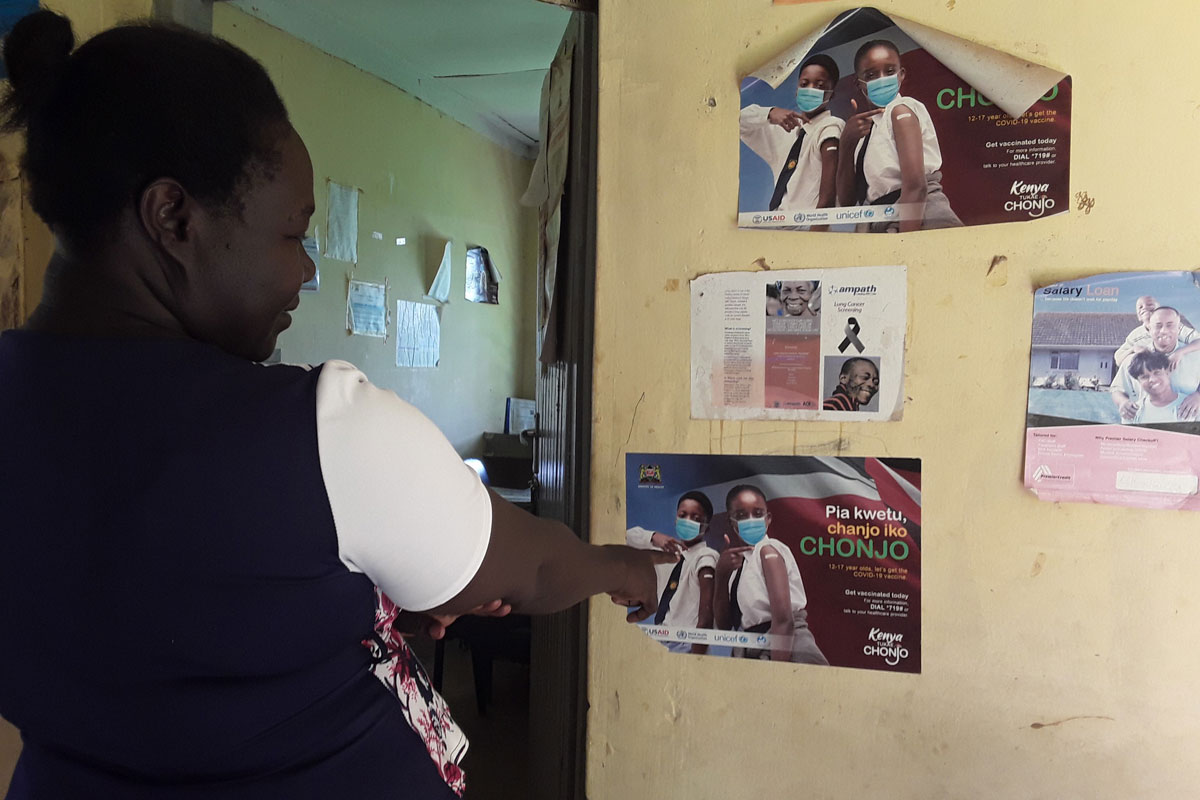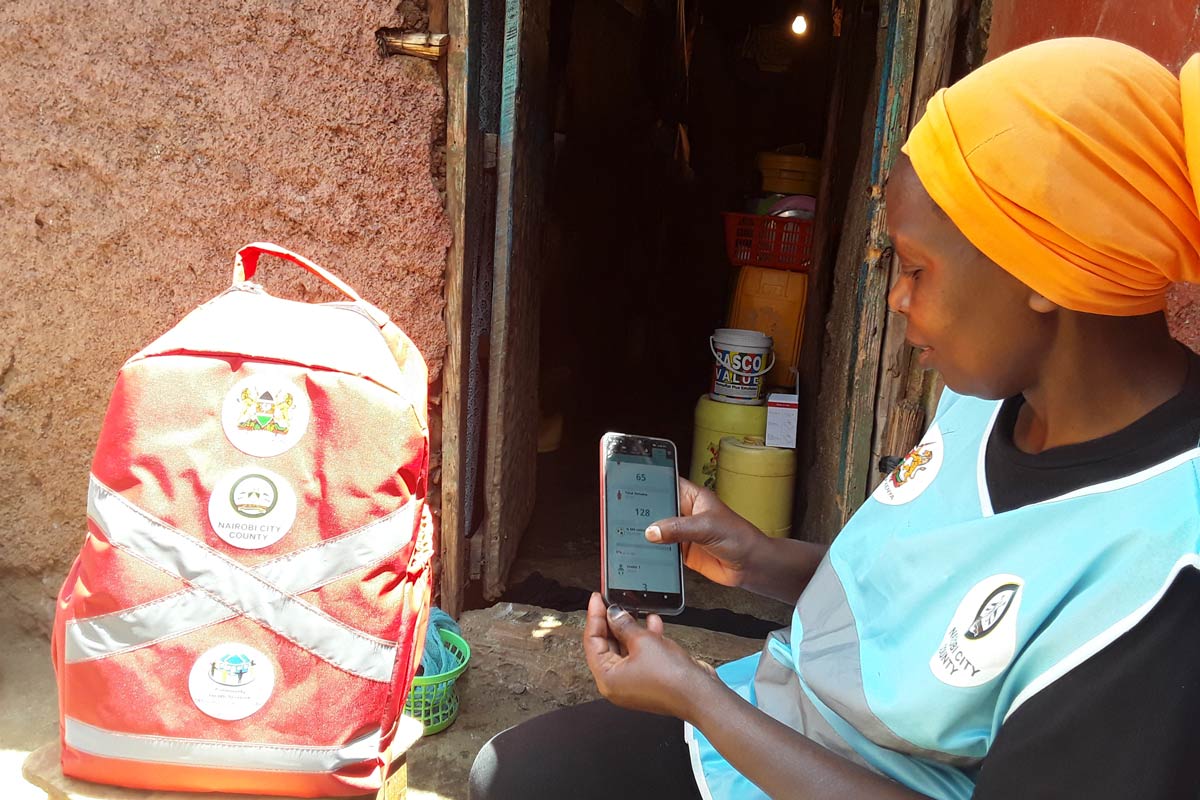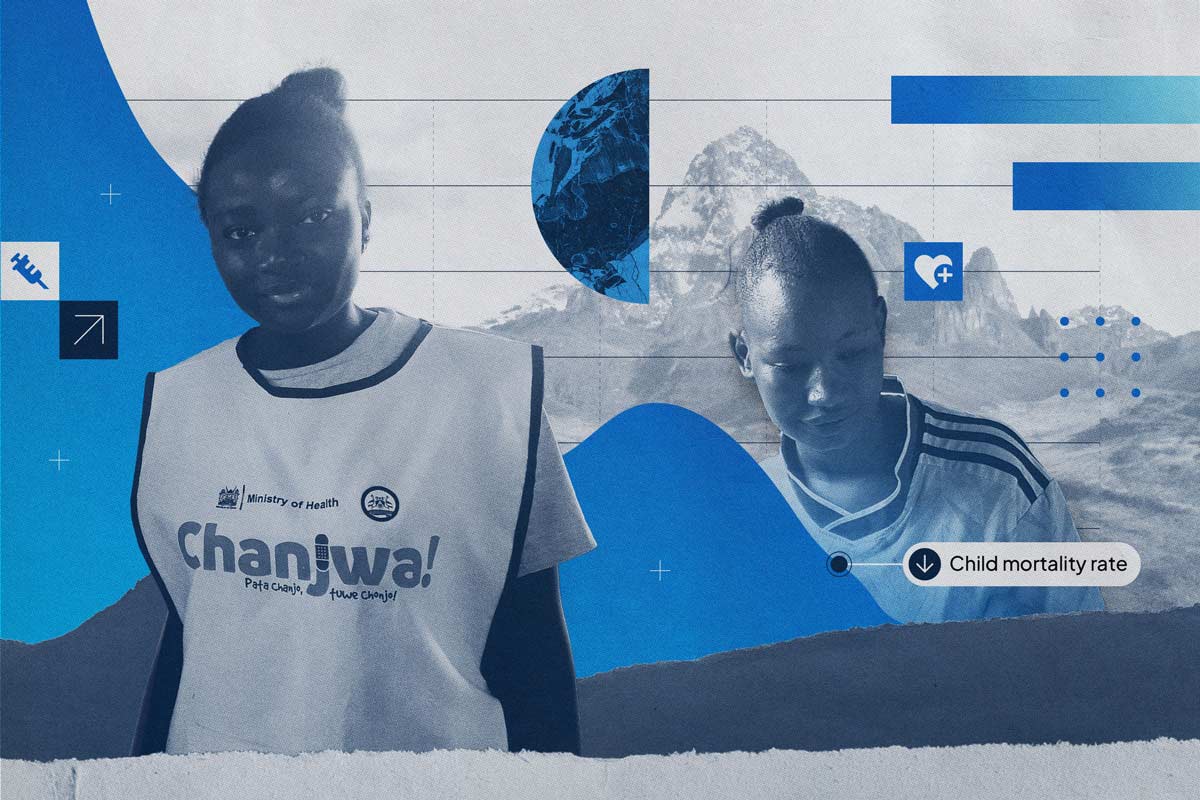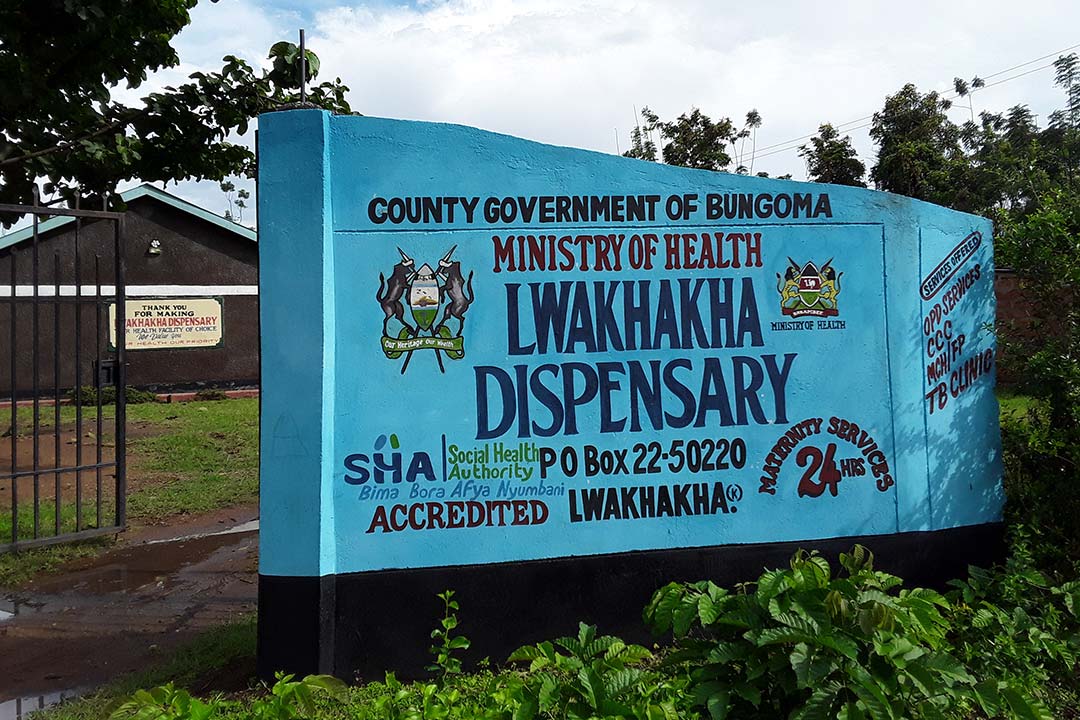Free maternal health care in Kenya “brought women and children back to hospitals”
With more infants starting life in touch with the health system, can childhood immunisation rates expect a boost?
- 12 October 2023
- 7 min read
- by Joyce Chimbi
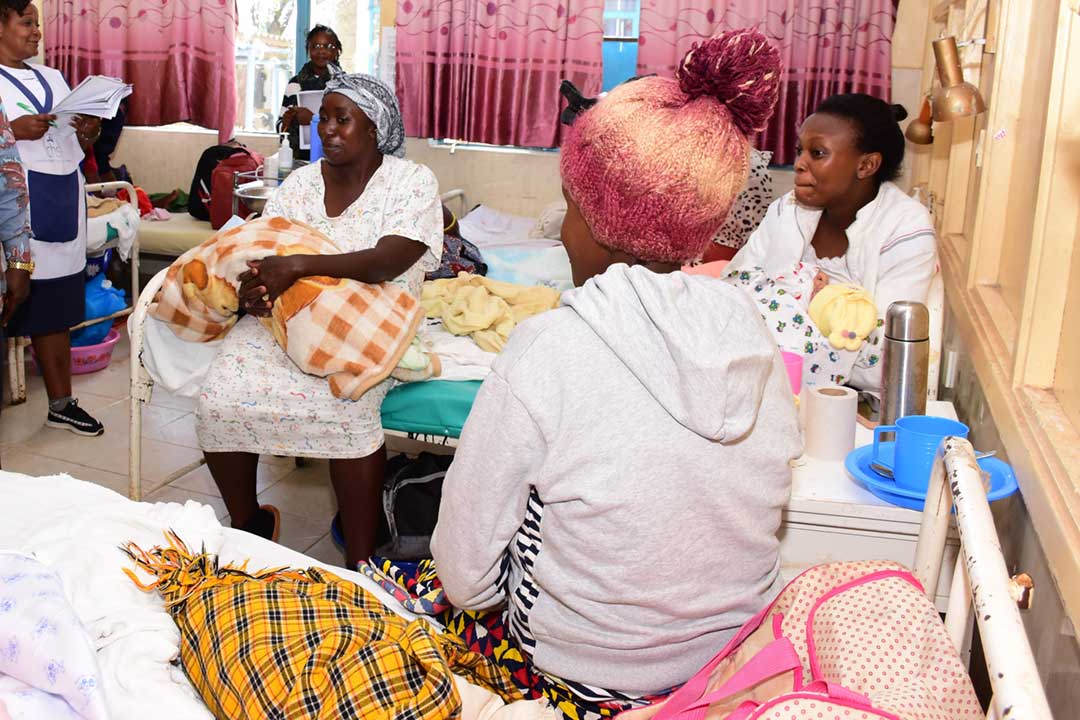
Rael Muriu's first child was born nine years ago. Like many others before her in Mathare Valley, an informal settlement in Nairobi, she gave birth at home with the help of a mkunga, Swahili for a traditional birth attendant. They called her Shosh, Kenyan slang for "grandmother".
"The child that I delivered at home was vaccinated one year later during a mass vaccination campaign, and I cannot remember what it was for."
Rael Muriu, mother of four
Shosh had no formal training. But having self-delivered four living children, she became the de facto birth attendant in the area – receiving food items such as a packet of sugar and maize flour in payment for helping mothers in labour.
"She would come to your house with a string to tie the cord, a razor blade to cut it and later on she started wearing two plastic bags on her hands as gloves to protect herself from HIV in case the mother had it. She lived among us, knew us and we trusted her – unlike the rude and harsh nurses in public hospitals back then," Muriu explains.
Her misgivings about professional health care were grounded in first-hand observation. "I visited my sister in 2015 at the hospital when she had her baby, and women were wailing and screaming and even delivering in the corridors, and the nurses were completely unbothered. Very bad treatment. The child that I delivered at home was vaccinated one year later during a mass vaccination campaign, and I cannot remember what it was for. The girl is very small compared to my other children, and she falls ill very often. I was told it is because I never took her to the hospital for all vaccinations."
A safer start
By the time Muriu was ready to give birth again, her outlook on the government health establishment had changed. Her second, third and fourth children – born in 2016, 2019 and 2022 respectively – came into the world at Nairobi's Pumwani Maternity Hospital – the biggest specialist government health facility in Kenya, under a free maternal health care scheme called Linda Mama.
Where just 62% of deliveries took place in health facilities in 2014, a year after hospital births were made free, in 2022, 82% of babies were born in clinics and hospitals.
"I did not pay a single cent and services were very good. Before I went home with my babies, they had already received their first doses of immunisation. In 2019 and 2022, I would receive SMS messages on my phone reminding me of when to take the baby to the clinic for vaccinations," says Muriu, who sells clothes in Gikomba, one of the largest markets in Kenya.
The mobile reminders were a welcome development. "After giving birth in 2016, I would check the vaccination card for the dates, and sometimes I went in a few days or weeks late, because as time went by, I would forget to check the card for the vaccination dates."
Making birth affordable
Kenya's government introduced Linda Mama's predecessor, the Free Maternity Scheme, ten years ago, following a series of hits and misses in the user fee reforms for maternal health services.
Today, Linda Mama – which means "Protect Mama" in Swahili – provides a basic package of services free of charge to pregnant Kenyan citizens, accessible in public and faith-based facilities. Covering antenatal care, attended delivery and outpatient care, including immunisations, for babies up to nine months of age, Linda Mama has been billed as a step on Kenya's journey towards universal health coverage (UHC).
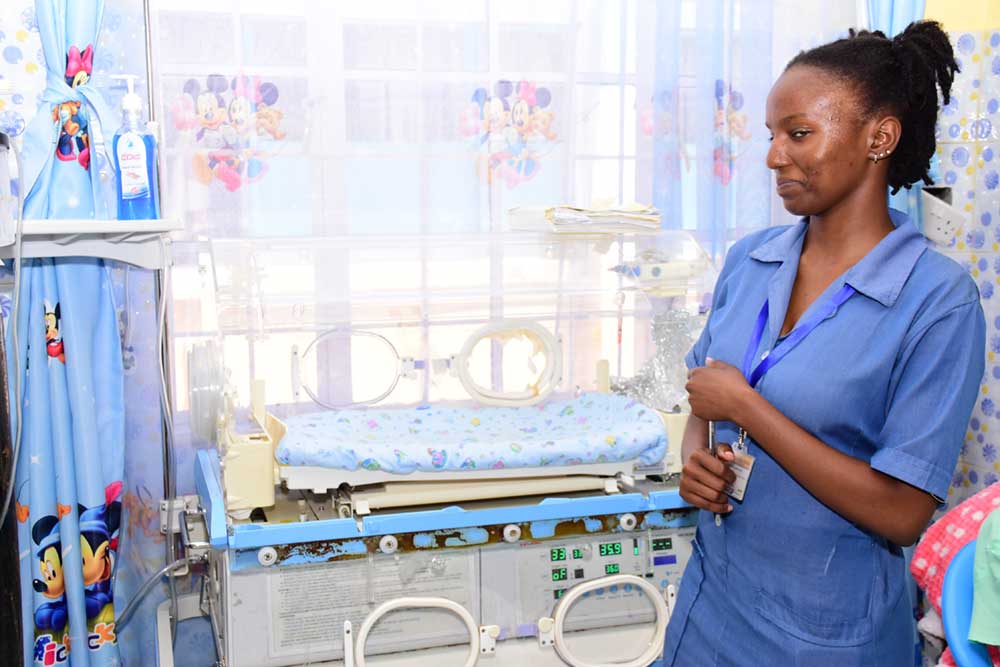
Credit: Joyce Chimbi
As hospital-based deliveries became the cheapest option available to expecting mothers, the proportion of babies born in facilities leapt. Where just 62% of deliveries took place in health facilities in 2014, a year after hospital births were made free, in 2022, 82% of babies were born in clinics and hospitals.
The survey also found that an estimated 80% of children aged 12 to 23 months had received all their basic vaccinations – defined as including BCG, MR, three doses of diphtheria, tetanus and pertussis-containing vaccine, as well as three doses of polio vaccine, excluding the polio vaccine given at birth – in 2022. This was a slight increase on 2014's rate of 79.4%, and a major rise on the 57% coverage recorded ten years before the introduction of free maternal health cover, in 2003.
"Facility births increased by [only] 1% between 2003 and 2008/09. Linda Mama was birthed by a pro-poor policy to address the serious inequalities that existed in access to maternal health services. Facility births have increased very significantly since the programme was rolled out. Before, women fled the hospitals due to poor maternity services, yet they were being charged to deliver in public hospitals," says Joe Njoroge, a senior officer at the National Health Insurance Fund (NHIF), which has run the Linda Mama programme since it was moved from the Ministry of Health in 2017.
Have you read?
That so many infants are beginning life in health facilities is an advantage for the national immunisation programme. "Babies delivered at home were out of reach of the government's Expanded Programme for Immunization. It has taken the Linda Mama intervention to bring mother and child back to the hospital. Under Linda Mama, mothers receive free antenatal care, labour and delivery, and outpatient care for their babies for up to one year."
"Babies delivered at home were out of reach of the government’s Expanded Programme for Immunization. It has taken the Linda Mama intervention to bring mother and child back to the hospital."
– Joe Njoroge, National Health Insurance Fund
Njoroge further states that enrolled mothers also benefit from other interventions, such as "maternal mobile phone messaging for health in general, and immunisation to be specific, in order to keep mother and baby as close to their health provider as possible towards the best possible health outcomes. Facility births are the cornerstone of any child vaccination and immunisation program. Where you have a high number of home deliveries, you will also have many zero-dose children."
Stacking health benefits
It's a conviction echoed on the frontlines of maternal and child health care. "It is well proven that only babies whose mothers are in close contact with a health facility will have received vaccinations against all basic antigens, at the very least," says Mary Wambui, a paediatric nurse at Kiambu Level 5 Hospital. "When they deliver at home, if the baby cries and appears healthy, they rarely come to the hospital unless the baby falls sick. This is a very serious situation because vaccination is critical in improving child health, preventing infant and child deaths and giving children lifelong health benefits."
Amid improved contact between expectant mothers and the health system, Kenya achieved elimination of maternal and neonatal tetanus in 2019.
Neonatal tetanus is a major cause of infant death in many countries, with poor hygiene during delivery considered a risk multiplier. But tetanus toxoid injections, given to mothers during pregnancy, protect both mother and infant. Seventy-five percent of women in Kenya with a live birth in the two years to 2022 had received the tetanus toxoid injections they needed to protect their babies.
"We are making very good and steady progress in providing mothers and babies with all the services they need before, during and after delivery."
– Mary Wambui, pediatric nurse
"We are making very good and steady progress in providing mothers and babies with all the services they need before, during and after delivery. Before, we would move forward and then backwards. But we still need to figure out why 98% of pregnant women [claimed they] had contact with a skilled health provider [during their pregnancy] and fewer, 82%, gave birth at health facilities in the two years preceding the release of KDHS 2022," Wambui observes.
Despite existing gaps, Kenya's steady increase in facility births – allowing Kenyan babies the safest start in life – seems to be paving the way towards increased childhood vaccination coverage.
More from Joyce Chimbi
Recommended for you

